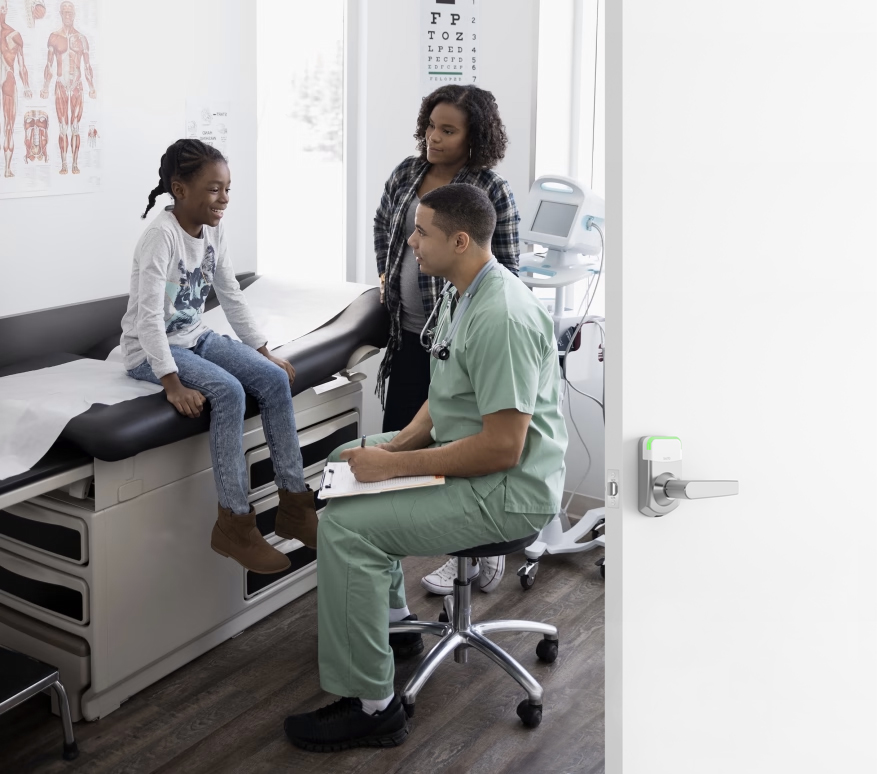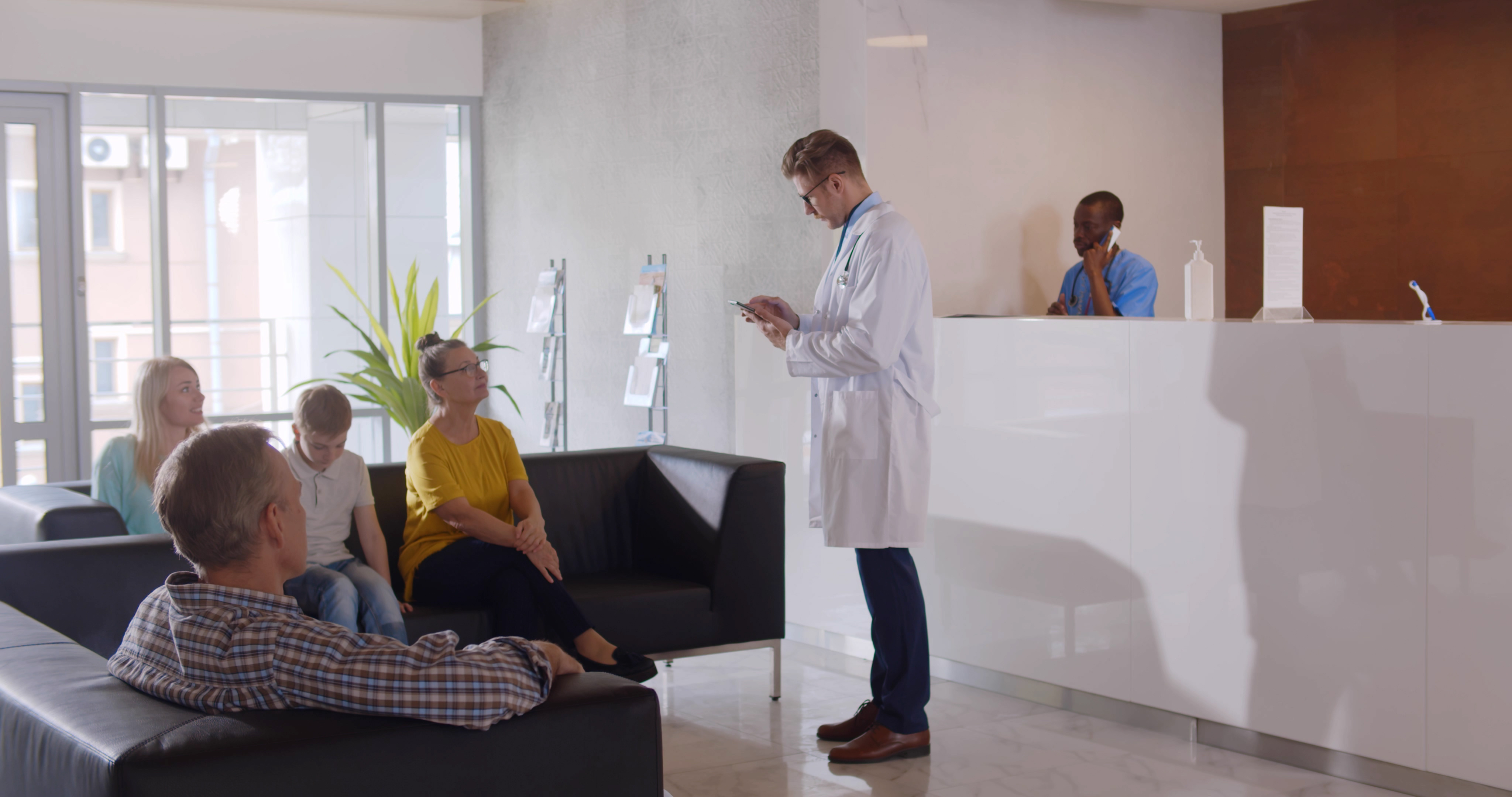Out is In: Outpatient Care, Medical Office Buildings, and the Future of Healthcare Facilities
Developers, owners, investors, and property managers are seeing an extraordinary change in healthcare real estate playing out in real-time, and for those tuned in to this trend in the market—change means opportunity. This shift, characterized by the migration of healthcare services from traditional hospital settings to Medical Office Buildings (MOBs), is more than a passing phenomenon. For those dialed into these market nuances, this change doesn’t merely signify adaptation but an evolution, opening up new avenues of opportunity, and inviting stakeholders to engage with, and capitalize on, the evolving healthcare landscape.
Population and generational shifts. Breakthroughs in medicine and medical treatments. Adoption of emerging technology. An increased focus on the overall patient experience. Healthcare delivery is transforming rapidly to meet the needs of our changing world. The recent trend of moving services and treatment away from general hospitals and towards medical office buildings is one sign of the industry evolving to meet today's challenges and preparing for what comes next.
The healthcare facilities landscape is shifting to resemble mixed-use and retail environments more than the traditional hospital model. The healthcare industry is evolving to be more community-centric and flexible, seamlessly integrating health and wellness services into the daily lives of consumers. Modern medical office buildings now serve as hubs for medical practitioners, ranging from independent doctors to large hospital networks—much like a shopping mall provides space to a variety of retailers, restaurants, and entertainment venues.
Today's MOBs are designed and built to address the needs of the communities in which they are located. With advanced infrastructure and convenient access, these buildings cater to a wide range of patient needs, providing the right care, at the right place, and at the right time. To be successful, they must address each part of the patient's journey (healthy living, prevention, diagnosis, treatment, and ongoing care), which often means many different providers occupy the same building.

By all accounts, this is a better way to practice medicine—more economical for healthcare systems, more efficient and effective for practitioners, and easier and more convenient for patients. However, unlike other industries, healthcare providers face a number of unique and challenging security issues. Physical safety, patient privacy, HIPAA compliance, and concerns about medication and equipment theft top the list. Implementing modern access control systems in the MOB environment can mitigate these concerns while offering an array of additional benefits that extend beyond mere security.
Forces Leading the Change in Healthcare Facilities
Modern medical office buildings are emerging as an important component of the healthcare ecosystem, but what's fueling the surge in demand for MOBs? A significant driver is the aging population. The 'Boomer' generation isn't just the largest generational group; they're also living longer, increasing the demand for abundant and easily accessible healthcare services.
Another key driver is the continuing advancements in medical technology, treatment methods, imaging, lab capabilities, therapeutics, and other services. These advancements have enabled healthcare organizations to offer an expanded array of outpatient services onsite. As a result, there's a growing need for multiple, decentralized facilities spread across cities, suburbs, and rural regions, moving away from the traditional reliance on one central general hospital.
Additionally, many healthcare systems are shifting away from volume-based care and towards value-based care. A study released by Deloitte points to outpatient revenues growing and surpassing hospitals' inpatient revenue. Now, healthcare providers are exploring strategies to curtail costs while maintaining high-quality care and elevating the patient experience. MOBs present an opportunity to achieve these goals, simultaneously producing new efficiencies and trimming overhead expenses.
Security in Healthcare Should Still Be Top of Mind
Healthcare facilities are some of the hardest buildings to secure properly. They straddle the line between a desire to be welcoming and comfortable, and at the same time employing strict safety, security and privacy protocols.
Medical office buildings face an even more nuanced challenge; unlike hospitals, which typically have 24/7 security staff and layers of physical security technology, MOBs are much more like regular office buildings. It is easy for staff, patients, vendors and visitors to come and go freely. Despite this, security must remain a priority—the consequences of an insecure MOB facility can become serious, even dire in extreme cases.
Mitigate Risk by Leveraging Modern Access Technology
Modern electronic access control systems are by far the most effective physical security investment a developer, property manager or tenant can make in a medical office building. Far from merely controlling who can enter or exit a building, these systems act as multifunctional facility management tools that reduce risk, streamline operations, bolster security, and ensure compliance. Here is a list of the top considerations:
- Reducing Risk - One of the most significant benefits of smart access control solutions is the elimination of traditional metal keys. Electronic locks are not only safer but also more manageable than mechanical keys. This is crucial in a medical setting where security is paramount. Physical keys can be easily lost, stolen, or duplicated. Enhance safety for patients, visitors, and staff, safeguard costly medical equipment and assets, and shield data with the convenience of keyless smart access control.
- Support Staff - Enhance the working experience for staff. Transitioning from physical keys to smart credentials—be it fobs, key cards, PIN code access, or even smartphone digital keys—frees employees from the stress of dealing with lost, stolen, or misplaced keys. It also alleviates the responsibility of managing or replacing them.
- Create Efficiencies - These systems represent a substantial leap forward in operational efficiency. Whether it's an employee entrance, an office door, or a drug cabinet, every interaction a staff member makes with an access point is automatically recorded. This eliminates the need for time-consuming, manual reporting and record-keeping. Additional efficiencies can be achieved through integrations with other systems. For instance, visitor management systems can offer self-service capabilities like check-in/check-out kiosks and web portals can increase front-desk efficiency and enhance the visitor experience.
- Stay Compliant - The digital nature of these systems is also instrumental in staying compliant with regulations. They offer a secure, auditable trail of every access event at every lock or wall reader, ensuring compliance with federal and state regulations including CDC, local health departments, Joint Commission and HIPAA. This not only aids in a facility operator’s ability to demonstrate compliance concerning confidentiality and privacy protections but also significantly reduces liability.
- Emergency Readiness – Many access control systems allow you to immediately lock down specific doors, buildings or entire sites in the event of an attempted unauthorized entry or emergency incident. You can monitor emergencies in real-time and enable localized lockdowns activated by staff on the ground.
- Liability Mitigation - This robust documentation and reporting capability can also prove invaluable in addressing any potential disputes or malpractice allegations. These benefits provide additional reassurance to doctors and medical staff who could be protected from potential liability.

Looking Into the Future
What else might lie ahead for the MOB market? It may not only be a shift toward outpatient clinics in general but also an increase in repurposed commercial buildings (vacant office space, old strip malls, fast food restaurants, hotels and motels, etc.). Regardless, all evidence points towards the continued evolution of the MOB model.
As the healthcare industry continues to evolve, so will modern access control systems. They are complex data and facility management tools that will streamline operations and administration, enhance patient and staff experiences, and provide crucial peace of mind for families.
While primarily designed for safety and security, these systems offer far more than just locked doors. Today’s access control technologies are reshaping how we live, work, and interact with our physical spaces. By eliminating traditional keys, automating record-keeping, and offering a secure and auditable means of accessing sensitive areas, assets and information, this technology is helping shape a new era in healthcare.
The future of MBOs and medical campuses lies in leveraging new technologies and rethinking how we interact with these environments, always focusing on the ultimate goal—creating a safe and secure environment for people who need care and for the people providing it.






